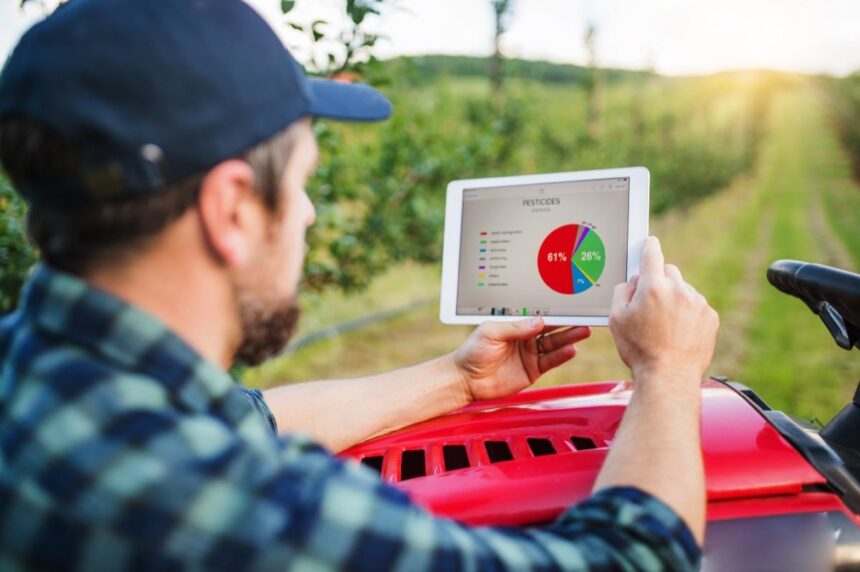Precision agriculture or agriculture is very simple, using technology and data to optimize agricultural practices to optimize maximum crop yields. Precision agricultural technologies can be monitored and managed more efficiently to reduce waste and increase yields. With the help of key technologies in precision agriculture, sustainability and more profits can be achieved. Sensors, GPs, and satellite imaging are typically used to enhance crop management.

What is precision agriculture? And how can I define it?
Precision agriculture uses data from a variety of technologies, such as sensors, GPS, and satellite imaging to manage agricultural activities. This is done by analyzing soil conditions, weather patterns, and crop health. Farmers can use this data and information to make more informed decisions for better crop management and profitability. Based on the data obtained from the sensor, farmers will more accurately apply resources such as the exact amount of local pesticides, water and fertilizer they need. These types of data help to achieve sustainability and efficiency and increase overall farm productivity.
What are the key elements of precision agriculture and how do they work?
Collect data in a technical way
The first step is to collect data from a variety of technical sources, particularly using sensors located in the field and sensors that mobilize drones and satellites. Generally, these techniques are used to monitor soil moisture, temperature and nutrient levels. Farmers also use images collected from drones and satellites to monitor the stages of crop health and growth. This data allows accurate action analysis to achieve better crop yields and benefits with better sustainability.
Use collected data to make timely decisions
Once data is collected from a variety of resources, it can be used to obtain useful information using AI and machine learning. Once the data is fully analyzed, the technology software can identify data patterns and provide actionable recommendations. To give this example, the data may provide the best time to irrigate the required fields and irrigation areas, and can also find crop damage in certain areas where pesticides are required.
In case you miss it: Sustainable Agriculture (Controlled Release Fertilizer) with CRFS: A Game Changer for Crop Productivity

How to implement and automate for actionable recommendations
Once decisions are made based on the data collected, the next step is to implement them on the crops. Tractors with GPS and harvesters and automatic control can be used for implementation. With this modern equipment, farmers can perform tasks such as planting and irrigation with precise and accurate. This reduces waste apart from effective use of resources in the field. Implementing automation can save time and effort and bring more benefits.
Which technology is key to precision agriculture?
Why is remote sensing important?
Techniques such as satellite and drone imaging are used by farmers to monitor field crops from above. Farmers can analyze these photos to determine the condition of the soil, health of the field crop, and pests and diseases. This helps farmers make sophisticated decisions by detecting crop problems early. This remote sensing technology will undoubtedly help farmers improve crop yields and profits.
Global Positioning System and Global Navigation Satellite System
Global Positioning System (GPS) and Global Navigation Satellite System (GNSS) are important and important technologies for precision agriculture. These high-tech methods help farmers and agricultural equipment in fields and agricultural equipment to function by ensuring that resources are applied accurately where and where they are needed.
In case you miss it: Modivision of Indian Agriculture

How does IoT in Precision Agriculture work?
The Internet of Things (IoT) allows farmers to monitor field crops in real time. As an example, a soil sensor can be used. These can relay soil moisture levels. Weather stations track temperature and rainfall, and access remotely to provide updates, allowing farmers to make informed decisions.
How do AI and machine learning help with precision agriculture?
Artificial Intelligence (AI) and Machine Learning (ML) use large datasets of field crops. After analyzing the data, farmers can predict weather patterns and crop yields. This also helps farmers decide the best time to plant, prun, and harvest. This data, derived from AI and ML, can also be used to determine crop irrigation and fertilization.
In case you miss it: Organic Agriculture vs. Natural Agriculture (ZBNF): Key Principles and Differences

How beneficial is precision agriculture?
Simply put, we can understand that data-driven from a variety of technologies in precision agriculture can help farmers make timely decisions and can increase crop yields. It also helps farmers reduce the costs of input water, fertilizer and pesticides. This will provide higher yields and benefits by minimizing environmental harm and achieving sustainability. These techniques in precision agriculture not only save soil, but also help improve water management.
Some challenges for farmers to adopt precision agriculture
We saw how beneficial precision agriculture is. However, there are also some challenges during recruitment. Implementing the above technology requires greater investment and the initial equipment costs must be able to purchase. This is not possible for small farmers. Apart from this, farmers should be able to learn to operate these advanced tools. Therefore, farmers need to be trained and prepared to obtain technical expertise.
How much precision agriculture is adopted globally?
Large US farms have successfully adopted precision farming. Other developed countries have also successfully implemented it, especially in countries with advanced agricultural practices. After adopting these techniques in precision agriculture, farmers achieved dramatic improvements in crop yields and profits. However, countries with small farmers still face challenges in adopting precision agricultural technology.
What can we expect from precision agriculture in the future?
Now, many advances in AI, robotics and IoT technology can revolutionize agricultural practices. It may be affordable for small and medium-sized farmers to adopt these practices. Many small countries relying on agriculture benefit from achieving sustainable and profitable agricultural practices when adopting precision agricultural techniques.
In case you miss it: Artificial Intelligence in Agriculture – Roles, Benefits, and Examples

Conclusion
For the future sustainability of agriculture, future technology will make precision agriculture more profitable by changing our agriculture. It is important to collect data from different crop growth stages using different techniques, and to help farmers make better farming decisions by reducing waste and improving crop yields. It’s helpful. These modern agricultural practices can play an important role in global food production. Over the next few years, agriculture will be 100% digital.






